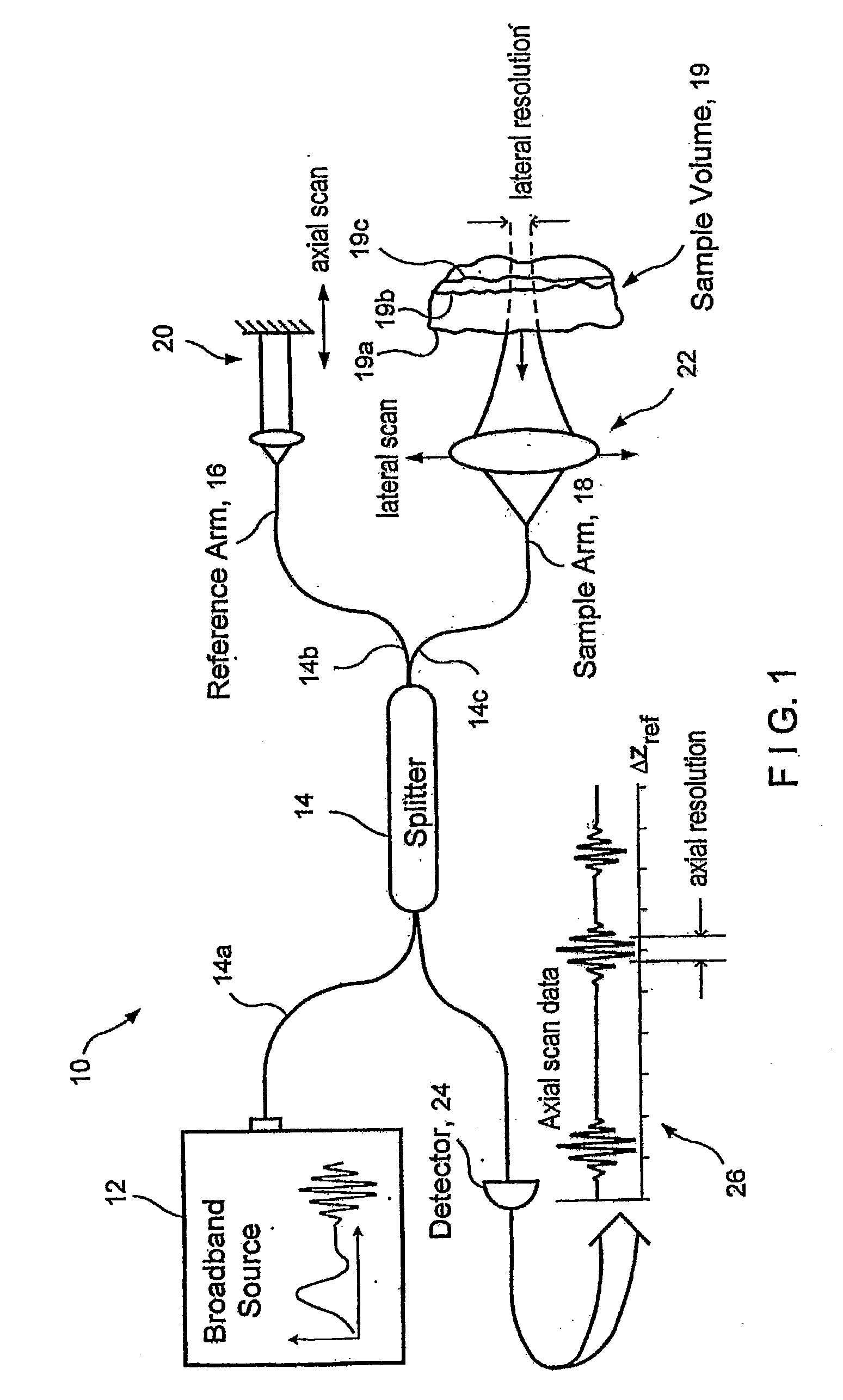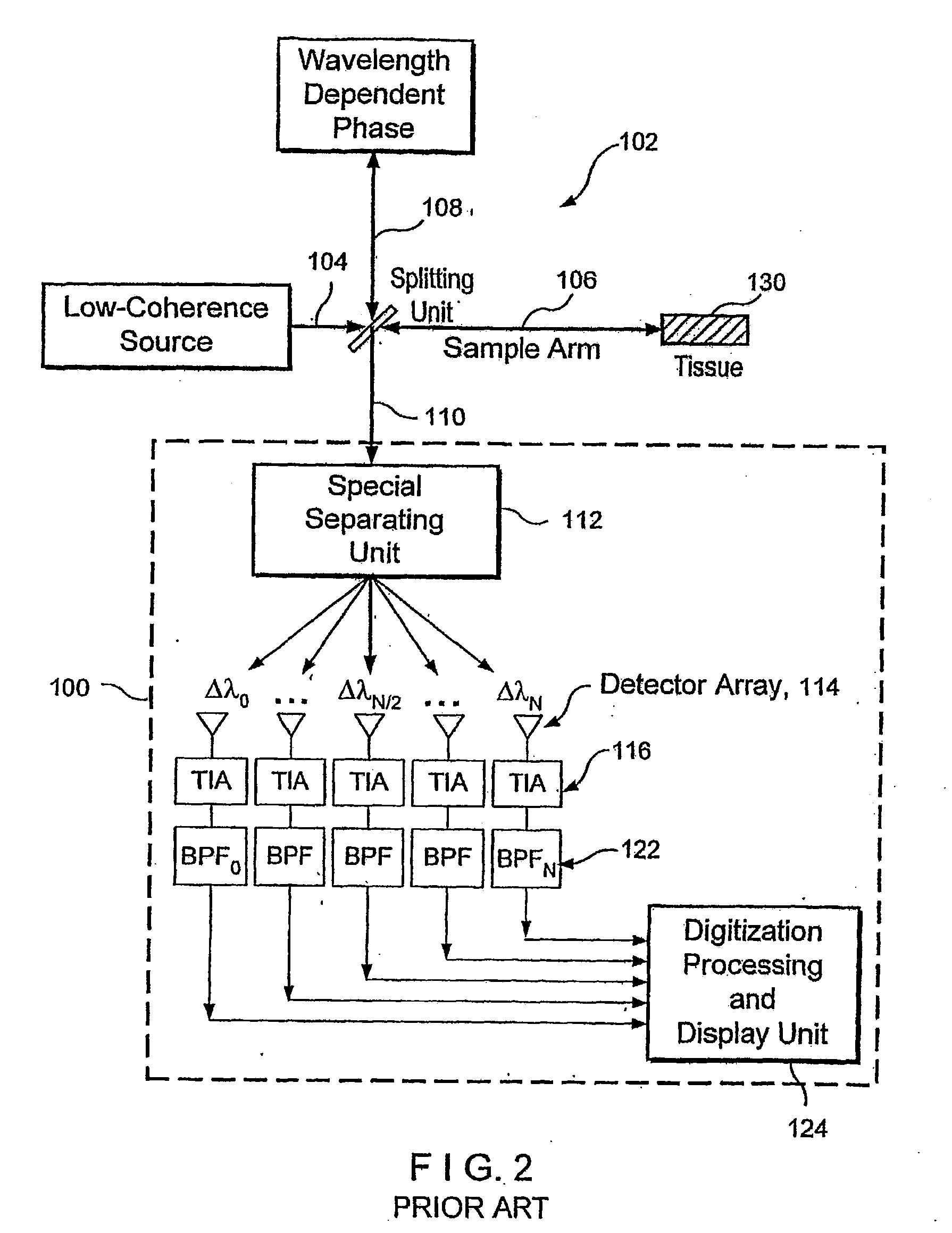Method and apparatus for performing optical imaging using frequency-domain interferometry
a frequency-domain interferometer and optical imaging technology, applied in the field of optical imaging, can solve the problems of low imaging frame rate, poor depth of penetration, non-optimal resolution, etc., and achieve the effect of suppressing relative intensity noise, achieving gain in signal-to-noise ratio (“snr”), and reducing nois
- Summary
- Abstract
- Description
- Claims
- Application Information
AI Technical Summary
Benefits of technology
Problems solved by technology
Method used
Image
Examples
Embodiment Construction
[0056]FIG. 1 shows an exemplary prior art time domain optical coherence tomography (“OCT”) system 10 which includes a broadband source 12 that provides a signal to a first arm 14a of two-by-two splitter 14. The splitter divides the signal provided thereto at port 14a, and provides a first portion of the signal at a port 14b coupled to a reference arm 16. The splitter 14 also provides a second portion of the signal at a port 14c coupled to a sample arm 18.
[0057]The sample arm 18 terminates at a sample volume 19 and an arrangement 22 for providing a lateral scan of the sample volume is disposed in the sample arm 18 prior to the sample volume 19. The reference arm 16 terminates in an arrangement 20 for providing an axial scan. The arrangements 20 and 22 operate as is generally known in the art.
[0058]Signals reflected from the means 20 and sample volume 19 back along the reference and sample arms 16, 18 respectively, are coupled back into respective ports 14b, 14c of the splitter 14 and...
PUM
| Property | Measurement | Unit |
|---|---|---|
| tuning wavelength range | aaaaa | aaaaa |
| power | aaaaa | aaaaa |
| structure | aaaaa | aaaaa |
Abstract
Description
Claims
Application Information
 Login to View More
Login to View More - R&D
- Intellectual Property
- Life Sciences
- Materials
- Tech Scout
- Unparalleled Data Quality
- Higher Quality Content
- 60% Fewer Hallucinations
Browse by: Latest US Patents, China's latest patents, Technical Efficacy Thesaurus, Application Domain, Technology Topic, Popular Technical Reports.
© 2025 PatSnap. All rights reserved.Legal|Privacy policy|Modern Slavery Act Transparency Statement|Sitemap|About US| Contact US: help@patsnap.com



